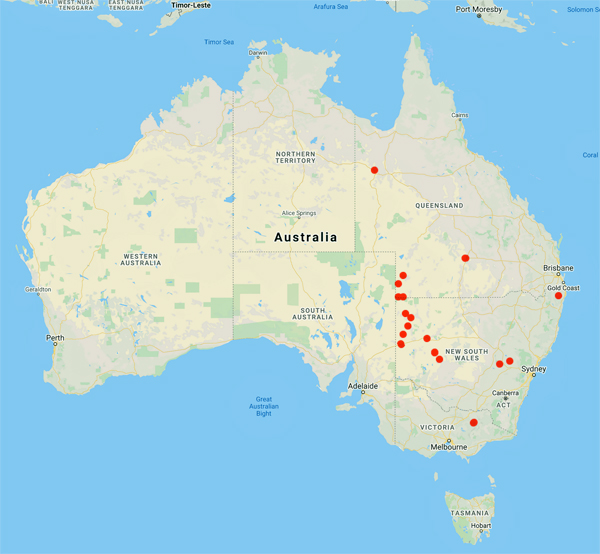
Council of Heads of Australasian Herbaria
Australian National Herbarium
Biographical Notes
 |
Council of Heads of Australasian Herbaria |
 MacGillivray, William David Kerr (1867 - 1933)
MacGillivray, William David Kerr (1867 - 1933)Born at 'Kallara', ca.160km southwest of Bourke, on the Darling River, NSW, on 27 November 1867; died at Broken Hill, NSW, on 25 June 1933.
The youngest son of
George and Janet MacGillivray, was bon at 'Kalara'
on the Darling River, NSW, in 1867,
but in 1871 moved to Queensland with his family
who had purchased land (later known as
'Eddington') on Eastern Creek, a tributary of the
Flinders River in the Gulf of Carpentaria.
Wiliam's playmates were the local Aboriginal
children, who taught him bushoraft, which stood him
in good stead in his quest for knowledge of the mysteries of the Australian outback
and remote Cape York Peninsula.
On arriving in Melbourne with his parents during the latter half of 1877, wiliam went to Hofwyl
School Academy (St Kilda), under Alexander Gillespie, and matriculated in 1885. He studied
medicine at The University of Melbourne from 1886, and it was here that Wlliam met ornithologist Dr
Ernest A D'Ombrain, and their friendship lasted his lifetime.
After graduating in 1890, William
acted as a locum tenens at Kaniva, and was a medical referee at Bendigo in Vic between
1892 and 1893. He moved to Launceston, Tas, for a few months, and then spent two years
at the Children's Hospital at Melbourne. He settled into a practice at Coleraine, western Vic, in
1895, and married lda Lilian Eccles on 1 January 1896.
He had an unlucky married lfe. His first
wife, Ida, passed away on 19 June 1906 in Broken Hil and his second wife, Hilda Bertine
Eccles, who he married on 16 October 1907 in Adelaide, also died on 19 July 1919 at St Kilda
(Melbourne), He then married his third wife, Eleen Margaret Ware, on 30 June 1926 at
Melbourne. She survived Willam who passed away on 25 June 1933 at his residence at Mica
Street, Broken Hill. He had two children by each of his first two wives.
In 1901, William established a practice at Broken Hill, NSW, and there he remained for the
rest of his lfe, except for active service in France in the Army Medical Corps in WW1. He
enlisted on 28 April 1917 and returned to Australia on 11 May 1919.
For most of his life William's main interest was ornithology, and especially egg and skin collecting, and he did numerous field trips to many parts of eastern Australia.
In his latter years apparently William's hearing failed and as he could no longer hear many of the birdcalls, he resorted to documenting the local flora, establishing a private herbarium.
Source: Extracted from book: 'Passions in Ornithology: A century of Australian Egg Collectors' (2020), Mason & Pfitzner, Canberra. [consult for source references]
Portrait Photo: courtesy of Liz Roveene, extracted from above book.
Data from 31 specimens
